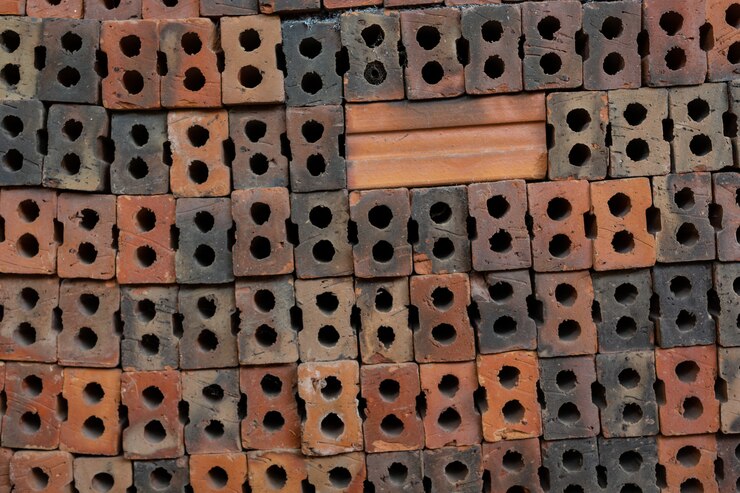In the ever-evolving world of architecture and design, the use of lightweight building blocks has become increasingly popular. These innovative materials are transforming how we construct and design our spaces. This blog explores the world of lightweight building blocks, understanding their benefits and why they are a game-changer in modern design.
Understanding Lightweight Building Blocks
Lightweight building blocks are exactly what they sound like – blocks used in construction that are lighter than traditional materials like concrete or steel. They are typically made from materials like aerated concrete, foam concrete, or other lightweight aggregates. These blocks are not just about being light; they are designed to be strong and durable while offering various other advantages.
Benefits of Lightweight Blocks in Modern Design
Lightweight building blocks are not just a trendy choice in modern construction; they bring multiple benefits that are revolutionising how we think about building and design. Let’s check out these advantages:
Enhanced Construction Speed and Efficiency
The ease of handling lightweight blocks significantly accelerates construction timelines. Their lighter weight means less strain on workers, leading to more efficient building practices. The quicker assembly also translates to reduced labour costs, making projects more budget-friendly.

Superior Energy Efficiency
These blocks have excellent thermal insulation properties. Buildings constructed with them stay warmer in winter and cooler in summer, reducing reliance on heating and air conditioning. This energy efficiency is not only good for the environment but also cuts down on energy bills.
Less Load, More Design Possibilities
The reduced weight of these blocks puts less pressure on a building’s foundation. This allows for more innovative architectural designs, especially in areas with challenging soil conditions or where lighter structures are necessary.
Effective Noise Reduction
The sound insulation properties of lightweight blocks are impressive. They absorb sound better than traditional materials, making them ideal for residential buildings in busy cities or specialised structures like theatres and sound studios.
Inherent Fire Resistance
Many lightweight blocks are designed to be fire-resistant. This added safety feature is essential in high-risk areas and adds an extra layer of security for occupants.
Sustainability and Environmental Friendliness
Often made from recycled materials, these blocks support sustainable construction practices. Their production typically has a lower carbon footprint compared to traditional materials, and their energy-saving properties further their eco-friendly status.
Creative Design Flexibility
The versatility of lightweight blocks in terms of shapes and sizes unlocks new realms of creative potential for architects and designers. This flexibility allows for more personalised and innovative building designs.
Cost-Effectiveness in the Long Run
While the initial investment in lightweight blocks might seem higher, they prove to be cost-effective over time. Savings come from reduced energy costs, lower transportation and labour expenses, and less wear and tear on the building structure.
Improved Structural Integrity
Despite their lightness, these blocks are solid. They provide excellent structural integrity, reducing the risk of cracks and damages over time, which is crucial for the longevity of any building.
Ease of Installation and Modification
Lightweight blocks are easier to cut and shape than traditional materials. This makes them ideal for custom designs and last-minute modifications on the construction site, further enhancing their practicality.
Moisture and Pest Resistance
Many lightweight blocks are resistant to moisture and pests, which helps in maintaining the health and longevity of a building. This resistance is particularly beneficial in humid climates or areas prone to pest issues.
Reduced Transportation Costs
Their lighter weight means that more blocks can be transported at once compared to heavier materials, reducing transportation costs and the environmental impact of logistics.
Thermal Stability
Lightweight blocks possess excellent thermal stability. This means they can withstand temperature variations without losing their structural integrity or shape. In areas with extreme weather conditions, this characteristic ensures that buildings remain safe and comfortable year-round.
Reduced Foundation Requirements
The lighter weight of these blocks means that foundations don’t have to be as deep or strong as they would need to be for heavier materials. This not only simplifies the construction process but also reduces the amount of concrete and steel required, which can lead to significant cost savings and less environmental impact.
Adaptability to Modern Construction Techniques
Lightweight blocks are highly compatible with modern construction techniques like modular building. Their ease of handling and adaptability make them ideal for prefabricated construction, where speed, efficiency, and precision are critical. This compatibility allows for innovative construction methods that can further streamline building projects and reduce overall construction time.
Green Building Practices with Lightweight Blocks
As the world is moving towards more sustainable and eco-friendly building practices, lightweight building blocks are gaining prominence for their role in green construction. This section explores how these innovative materials contribute to creating environmentally responsible and resilient structures.
Lower Carbon Footprint
The production of lightweight blocks typically consumes less energy compared to traditional building materials like concrete or bricks. This reduced energy requirement translates into a lower carbon footprint for the entire construction process.
Enhanced Thermal Performance for Green Buildings
The excellent insulation properties of lightweight blocks contribute significantly to creating energy-efficient buildings. This aligns with the principles of green building, aiming to minimise energy consumption for heating and cooling, thereby reducing the overall environmental impact.
Waste Reduction and Recyclability
Many lightweight blocks are made from recycled materials, contributing to waste reduction in the construction industry. Additionally, their recyclability at the end of their life cycle further underscores their eco-friendly attributes.
Promoting Healthier Living Environments
The use of non-toxic and natural materials in some lightweight blocks contributes to healthier indoor air quality. This is particularly beneficial in residential buildings, where air quality directly impacts the health and well-being of occupants.
Jindal Mechno Bricks – Perfect for Lightweight Building Blocks
Jindal Mechno Bricks stands at the forefront of this innovation, providing top-quality lightweight building blocks that are perfect for modern construction needs. With their expertise and high-quality materials, Jindal Mechno Bricks is your ideal partner in bringing the benefits of lightweight blocks into your projects.
Conclusion
In summary, the benefits of lightweight building blocks extend far beyond simple weight reduction. They offer a multitude of advantages that cater to efficiency, sustainability, creativity, and long-term cost savings in modern design. These features make them an indispensable tool in the arsenal of contemporary architecture and construction.










